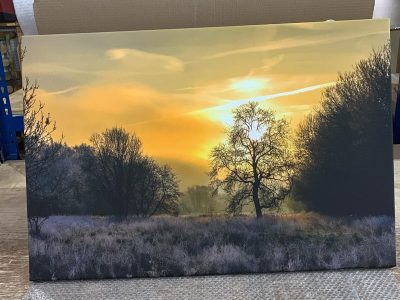These 11 water-efficient landscaping ideas are drought-proof. You’ll have a lush, green backyard in no time.
They also offer beauty, and resilience, and need little maintenance. You can create a stunning landscape. Do this by using water-saving plants, efficient irrigation, and smart design. It will thrive even in dry conditions.
Drought Resistant Plants
Go for native flora. The first step to water-efficient landscaping is to use drought-tolerant plants. Once rooted, they require little water because they have adapted to the local climate. Seek out plants with succulent leaves.
Also, look for ones with silver or grey foliage or deep roots. All of these point to drought tolerance. Some plants can handle droughts, like yarrow, agave, sage, lavender, and ornamental grass.
For gardening design assistance, you can turn to a professional landscaping company.
Create Mulch Beds
Mulching is key for keeping the soil moist. It also stops weeds and regulates soil temperature. Pay attention if you want your landscape to be resilient in the face of drought! Invest in some organic mulch. Materials like bark, wood chips, or compost are excellent choices. Aim for a depth of two to four inches when spreading it around your trees and plants.
You might wonder, why bother. Mulch retains moisture, lowers evaporation, and deters weed growth. Your plants remain hydrated and healthy even in the harshest of sun conditions. The mulch also gives the landscape a finished look.
Install Efficient Irrigation Systems
Purchase soaker hoses or a drip irrigation system for your garden. They deliver water to the roots. This minimizes water waste and evaporation. Put drip irrigation systems in garden beds. Also, use them around trees and shrubs. They provide targeted watering and cut water use. Consider using smart irrigation controllers or rain sensors. They adjust watering based on weather and soil moisture, further saving water.
Group Plants by Water Needs
Organise plants in your landscape by their water needs. This creates efficient irrigation zones and uses less water. Put plants with similar water needs together in beds or planting areas. Keep them apart from high-water-use plants to avoid overwatering. This lets you tailor irrigation schedules. You can water to meet each plant group’s needs. It saves water and promotes plant health.
Add Hardscape Elements
Design your landscape with gravel pathways, rock gardens, or patios. Turfgrass or plantings won’t require as much water. Use permeable paving materials. Gravel and decomposed granite work well. They allow rainwater to soak into the soil. This process recharges groundwater supplies. Add boulders, stones, or gravel mulch for texture and visual interest. They also add drought tolerance to the landscape.
Plant Native Species
Local climates and soil types are well suited for native plants. They are great options for landscapes that can withstand drought. Select native grasses, trees, and shrubs. They are adapted to your region’s rain and temperature. Ultimately, native plants require little care, little watering, and little fertiliser. They are ideal for sustainable landscaping because of this.
Create Rain Gardens
Designed to catch roof runoff, rain gardens capture rainwater. They also capture it from driveways and other impervious surfaces. They lessen pollution, flooding, and erosion in nearby waterways. In your landscape’s low-lying sections, create a rain garden. Plant drought-tolerant vegetation that can withstand sporadic flooding there. Sedges, wildflowers, and native grasses should be used.
They create a natural and good-looking rain garden. It will improve water conservation and biodiversity in your yard.
Install Artificial Turf
Consider replacing water-intensive lawns with fake turf. This will save water and cut maintenance in dry areas. Artificial turf has a verdant appearance. It does not require fertilisation, mowing, or watering. Select artificial turf products of superior quality. They imitate the texture and appearance of real grass. They also provide better drainage, UV resistance, and durability.
Use Succulent Gardens
A fantastic option to withstand drought is a succulent garden. In dry conditions, agave, sedum, and echeveria can all be grown. They can tolerate dry conditions because of their fleshy leaves and stems. Succulents adore soil that drains properly. Use containers or rock crevices. This prevents waterlogged roots and promotes healthy growth.
Implement Xeriscaping Principles
A xeriscaping approach is a type of landscaping. It all comes down to designing outdoor spaces that use less water. The strategy emphasises water-saving methods, drought-tolerant plants, and effective irrigation.
Use xeriscaping principles. These include improving soil and choosing water-wise plants. Also, use mulch and efficient irrigation. This will create a low-maintenance and eco-friendly landscape. Design your xeriscape to be useful and pretty. Focus on saving water and biodiversity.
Embrace Minimalism
Choose simple landscaping. Prioritise sustainability, usability, and simplicity. Just a few hardscape components, drought-tolerant plants, and design elements are required. Include them in a unified, well-balanced landscape.
Conclusion
You can accomplish your objectives with the aid of these gorgeous, long-lasting, and water-wise landscaping ideas. It will also flourish in arid environments.
You can conserve water and enhance your outdoor space in many ways. These include choosing drought-tolerant plants. You must also install efficient irrigation, add hardscape elements, and embrace xeriscaping. Implement these ideas. They will create a tough, eco-friendly landscape. It will provide years of joy while using little water and needing little maintenance.












Comments